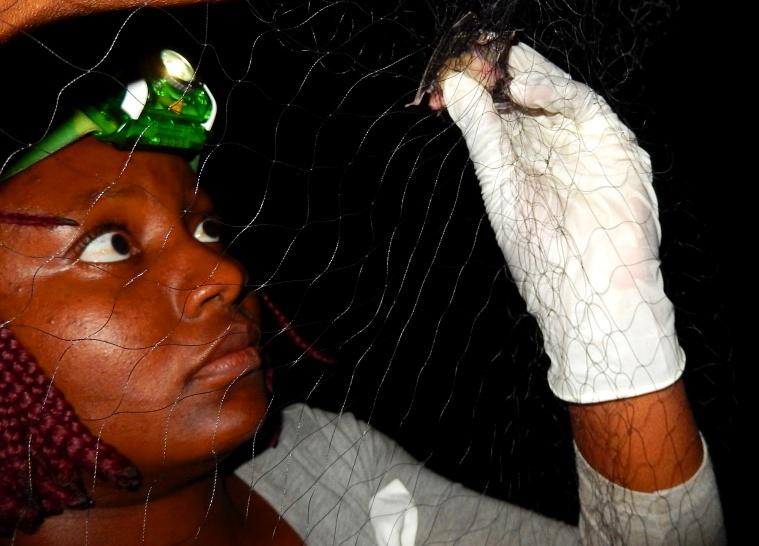Lina Mushabati
This project aims to investigate the level of water pollution at 12 sites used by bats in the kunene region (Namibia). Create an acoustic bat call library. Identify bat species distribution and promote their protection and awareness amongst the local community.

The Kunene region is an arid region with high biodiversity, it has a bat fauna of>16 species. This area includes two threatened ecoregions: Kaokoveld Desert (Critically/Endangered) and Namibian Savanna woodlands (vulnerable). The area has a high species richness and endemism but is poorly protected and is under threat from poaching, off-road driving and farming. Water sources such as springs used by bats are degrading from reduction in water quality, which is caused mainly by runoff fertilisers and waste thrown into the springs. The project aims to investigate the level of water pollution at 12 sites and create an acoustic bat library for the region. Identify bat species distribution and promote their protection and increase awareness amongst local communities through an outreach program on the importance of bats. Field work will be for seven months.
The project will comprise of 24 day trips each month. Mist netting, water sampling and recording of acoustic data will be the principal activities during this period. It will be done over boreholes and natural springs in the area. Wildlife acoustic SM4 bat detectors will be used every night during the netting period to record bat echolocation calls. Applicable statistical tests will be run to identify the pollutants at each site, how it varies within seasons and between different water bodies. Bat echolocation calls will be extracted and identified using Kaleidoscope software by comparing call variables (e.g. frequency, inter-pulse and call duration) in order to create a call library for the region. Applicable statistical tests will also be used to assess the bat communities present at each site, how it varies over time and between sites. Then combine data from the bat calls and water samples to see if there is any correlation, i.e. do more polluted sites have fewer bats or bat species. Public education and workshops will be undertaken with the local communities during the sampling period. Outputs of the project will include assessment of heavy metals, an established call library and community environmental protection strategies. This baseline data on bats will help determine the status of bats and their important drinking sites in the area and assist with conservation initiatives.